Hi! I’m a researcher and engineer with a Ph.D. in Operations Research from Politecnico di Milano.
After my academic stint, I joined a small university spin-off working on optimization (fittingly named KKT) that was later acquired by Verizon Connect.
Several years ago I’ve also been an intern at Google, where I worked with the team behind Google Flights.
Based in Italy  .
.
I’m interested in machine learning, AI, and mathematical optimization. Some of the things I’ve worked on, in the past or more recently, are:
- Machine learning and computer vision applied to multimodal data from connected vehicles (mainly IMU and video)
- Discrete optimization methods for difficult graph problems (vehicle routing, elementary shortest path, network routing under fairness constraints)
- Nonlinear planning and scheduling problems in energy systems, with uncertainty
You can find me on x/twitter and on github (I created a tiny python library with 500+ ⭐). Very rarely, I write blog posts/notes here. A list of my articles and patents can be found on Google Scholar.
Some pre-prints and a summary of my research projects can be found here ☟.
Projects
-
🦅 Semantic Perspective View Rendering as Supervision for Bird’s Eye View Segmentation

The bird’s eye view is a useful compact representation of a driving scene. We explore ways to train BEV-from-mono models in settings where there are extremely few or no BEV ground truth annotations at all. To do so, we leverage differentiable volumetric rendering to receive supervision from semseg pseudolabels in perspective view obtained from an off-the-shelf 2D semantic segmentation model.
-
🚦 Color is not enough: identifying relevant traffic lights in driving scenes
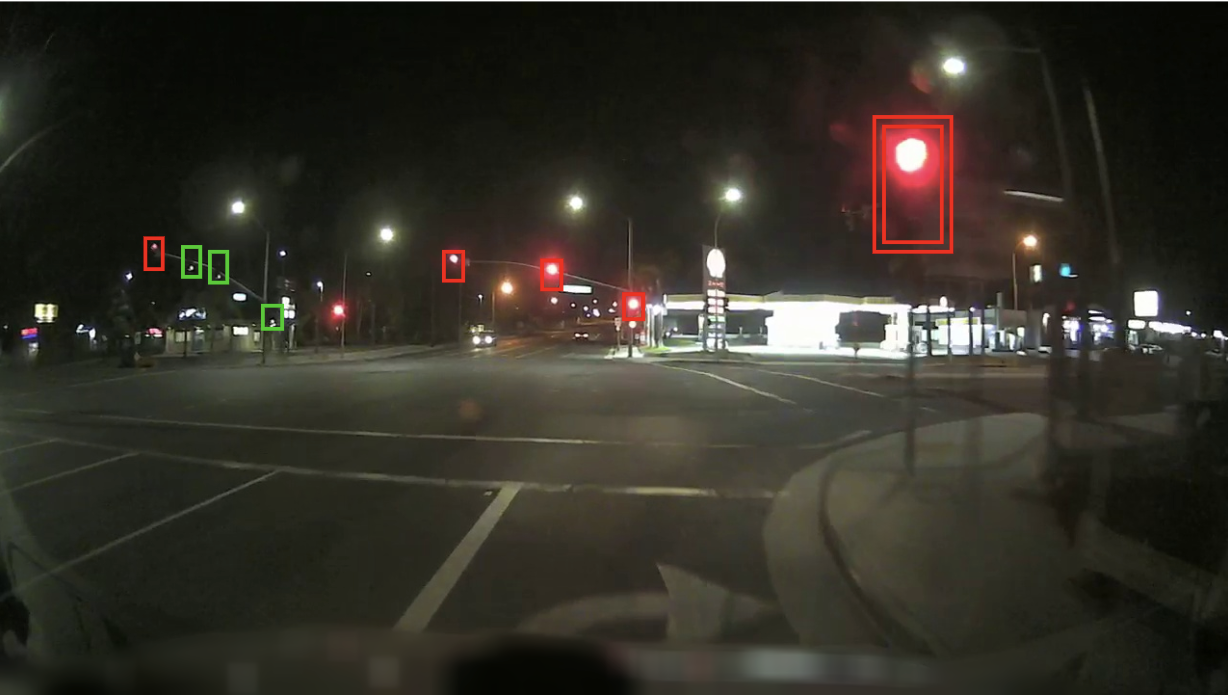
In this work, we address both the local task of identifying the state and relevance of each traffic light in an image, and the strictly related global task of recommending the correct course of action for the ego-vehicle (should it stop?). We propose an architecture which not only localizes each traffic light and identifies its relevance with respect to the ego-vehicle, but also generates a global decision.
To address the scarcity of datasets with these types of annotations, we also introduce the VZC Traffic Light Dataset (VZC-TLD), the first U.S.-centric dataset providing images annotated with traffic light boxes, states, and relevance.
-
Cross-model temporal cooperation via saliency maps for efficient classification of video frames
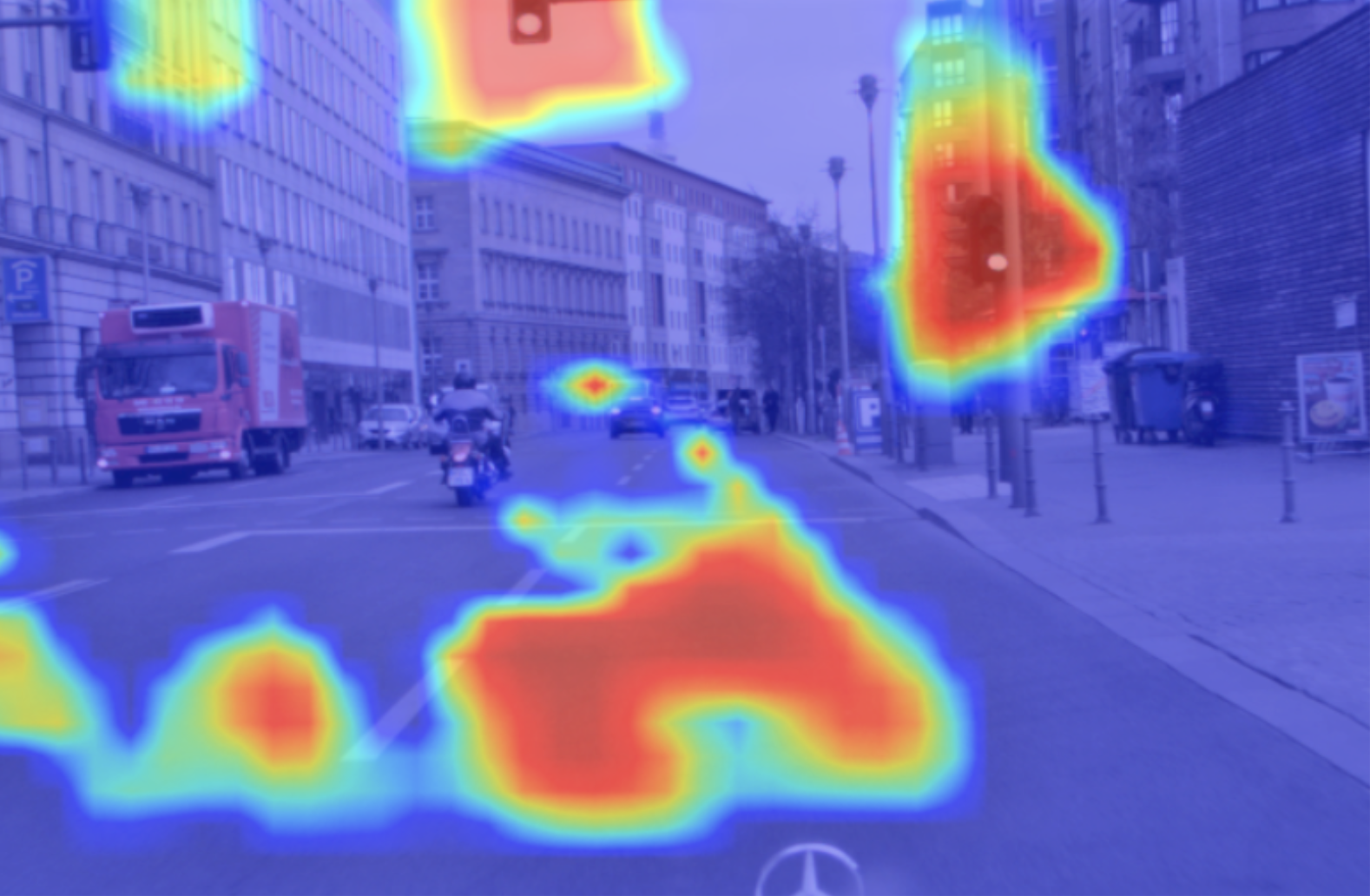
We propose an architecture that efficiently exploits temporal redundancies between consecutive frames in a video stream to maintain high accuracy while greatly reducing the average number of operations needed to process video frames. This is obtained with a larger model that runs at lower frequency and that shares spatial priors with a smaller model via saliency maps.
-
Dynamic Bird's Eye View Reconstruction of Driving Accidents
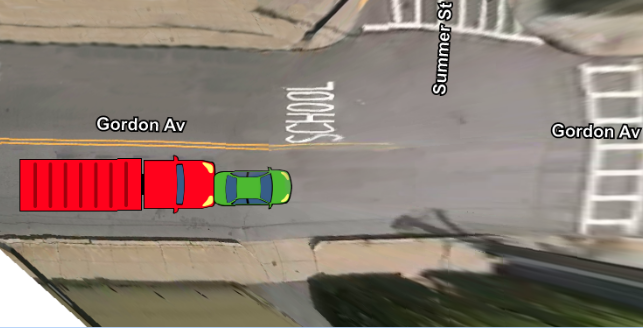
In this work we study how we can fuse data from connected vehicles to attain an automatic reconstruction of the dynamics of accidents. We build upon state-of-the-art methods in areas such as SLAM, depth estimation and object detection to create a reconstruction of the scene with the vehicles involved localized both in space and time, which we present in an animated bird’s eye view.
-
Domain-aware semi-supervised learning: exploiting label invariance in unlabeled data
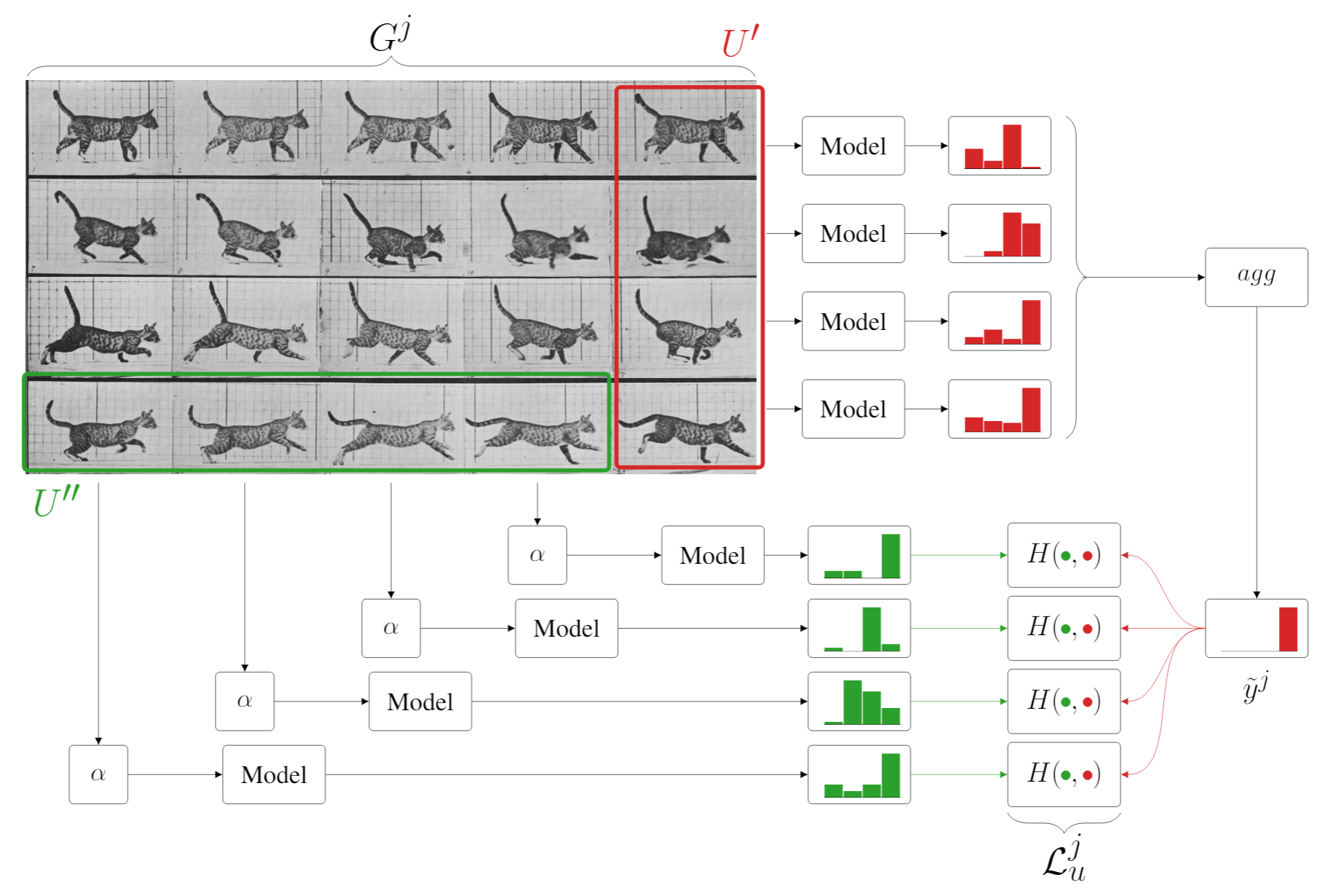
Surprisingly often, in practical supervised learning problems we can use domain knowledge to identify subsets of unlabeled examples with the same (unknown) label. Under this assumption, I propose an extremely simple way to exploit label invariance in unlabeled data within a domain-aware semi-supervised learning framework (DSSL).
My approach exploits such known invariants to generate higher quality pseudolabels to be used in a consistency loss term. I test it in the context of distributed cameras/sensors, on several practical cases that satisfy the required assumption, showing that the method is very effective, especially when few labeled samples are available, and can be easily adapted to tasks of different nature.
-
Accident detection from sensor data with multimodal self-supervision
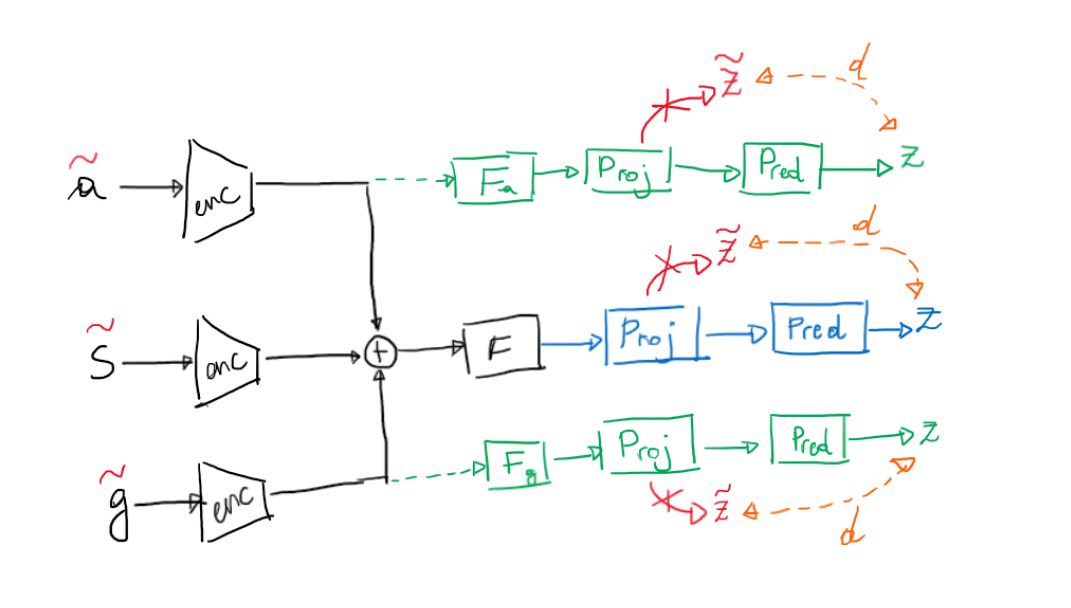
While major vehicle crashes are typically detected from on-board sensors with simple acceleration-based rules (e.g. for airbag deployment), we consider the problem of detecting any type of crash, along with its severity, in a challenging real-world scenario: extreme class imbalance, scarcity of positive samples, and very diverse conditions (vehicle size, road type, crash dynamics, sensor position, …).
To this end, we introduce a neural architecture capable of exploiting the different sensor streams (i.e., acceleration, gyroscope, and GPS), and a novel multimodal contrastive self-supervised training procedure that greatly helps generalization even with a small fraction of annotated examples. The proposed method significantly outperforms current state-of-the-art methods for time series classification, and shows much better sample-efficiency.
-
Neural architectures for unsafe maneuvers recognition from multimodal sensor data
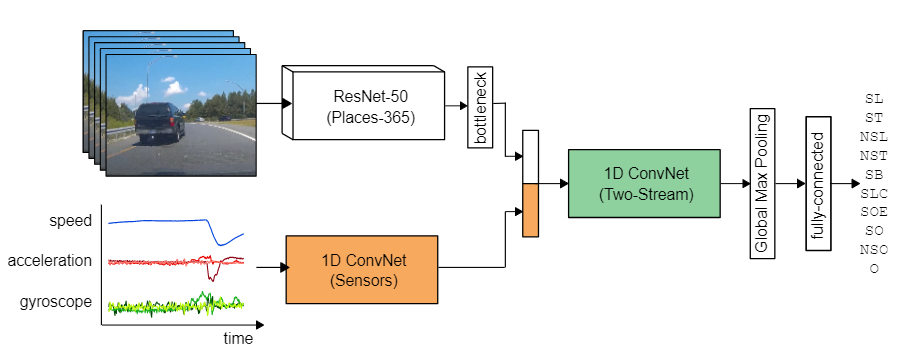
We study deep learning architectures for the end-to-end classification of unsafe maneuvers from different devices mounted on connected vehicles. We propose a number of two-stream architectures capable of processing both video and GPS/IMU signals as input streams, including a visual attention mechanism to help interpretability, and validate them on a large public dataset.
-
Lightweight CNNs for vehicle viewpoint estimation from monocular images
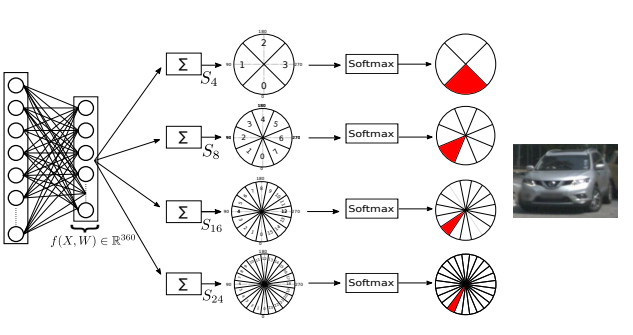
Vehicle viewpoint estimation from monocular images is a crucial component for several applications in connected and autonomous vehicles. We propose a number of contributions to advance the state of the art on this problem: a custom loss and several training tricks; the introduction of a layer to provide information on the coordinates of the vehicle in the image plane; and a new ad-hoc data augmentation.
-
Detection of stop sign violations from video and sensor data
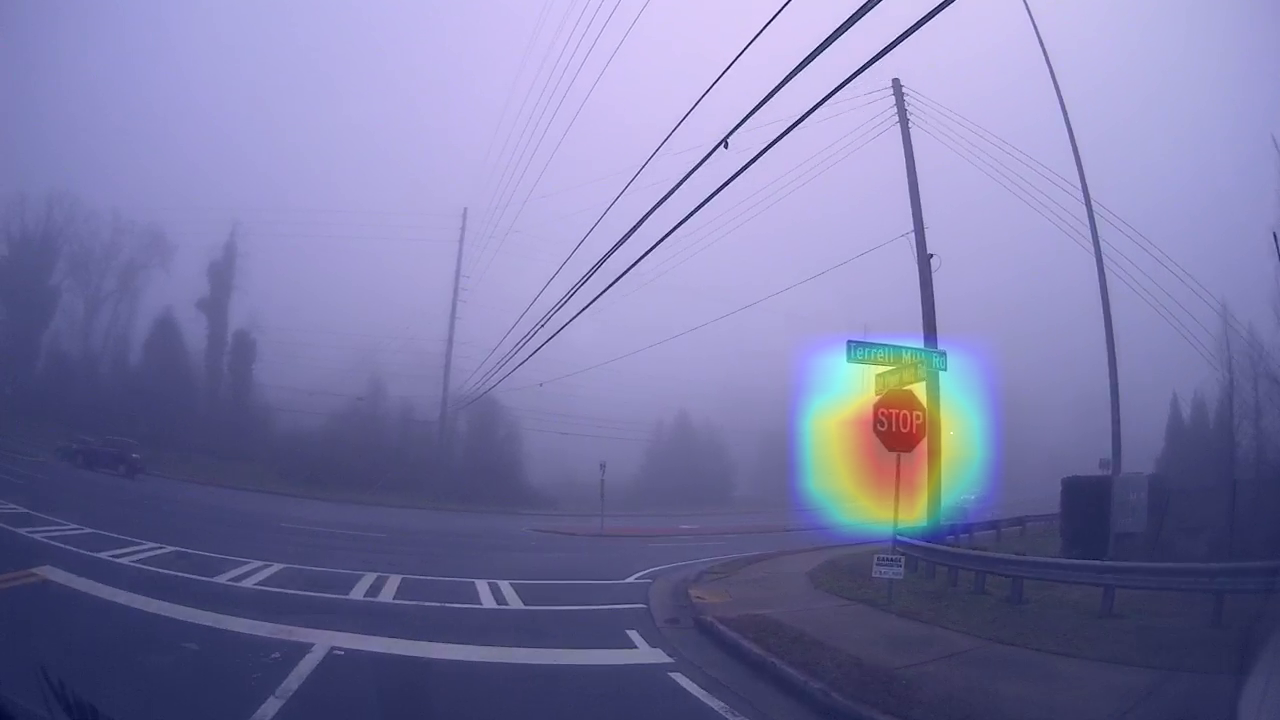
We study lightweight machine learning methods for automatic detection of stop sign violations from videos, Inertial Measurement Units (IMU) and Global Positioning System (GPS) data. We develop a pipeline of two stacked models: a custom CNN-based detector capable of identifying stop signs presence, position, and relevance within video frames, followed by a classifier assessing the presence of violations along with a severity score.
-
Detection of near-crash events from video and sensor data
-
RNNs for vehicle classification from low-frequency sensor data
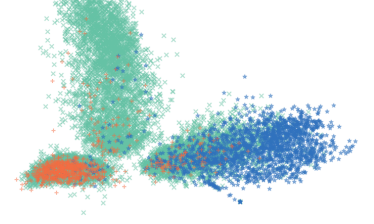
We leverage the widespread adoption of GPS trackers and investigate the use of sequences of GPS points to recognize the type of vehicle producing them, going beyond what is usually done in transport mode detection. We propose an approach based on LSTM recurrent neural networks that are able to learn effective hierarchical and stateful representations for temporal sequences. We provide several insights on what the network learns and report experiments on a very large dataset.
-
Exploiting sets of independent moves in Vehicle Routing Problems
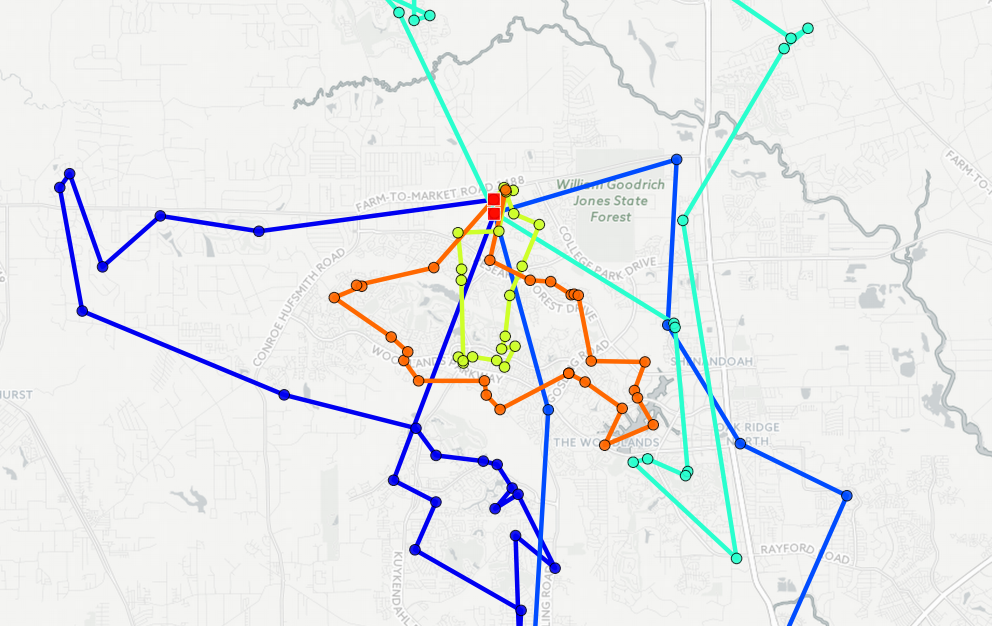
Most heuristic methods for VRP and its variants are based on the partial exploration of large neighborhoods, typically by means of single, simple moves applied to the current solution. In this paper we define an extended concept of independent moves and show how even a very standard heuristic method can significantly improve when considering the simultaneous application of carefully chosen sets of moves. To find such compounded moves, a mixed-integer programming subproblem is solved at each step.
-
Fleet behavior analysis from GPS and satellite data

We use GPS data and satellite images to extract patterns in the behavior of large commercial fleets. We explore how the integration of features from a CNN-based classifier can improve hotspot classification, where we identify and classify recurrent stops (depots, offices, gas pumps, …) of a fleet of vehicles based on historical GPS data.
-
Integer programming formulations for the elementary shortest path problem
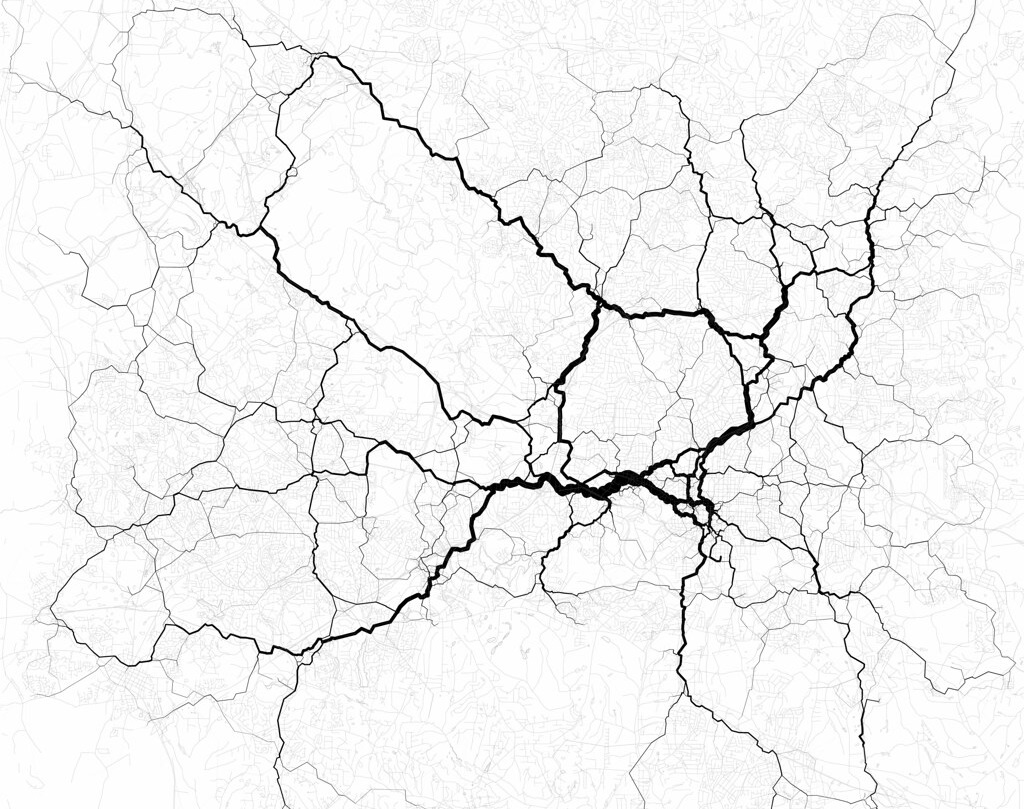
Given a directed graph with arbitrary arc costs, the Elementary Shortest Path Problem (ESPP) consists of finding a minimum-cost path between two nodes s and t such that each node of G is visited at most once. If negative costs are allowed, the problem is NP-hard and can no longer solved with polynomial algorithm such as Dijikstra’s. In this paper, several integer programming formulations for the ESPP are compared. We present analytical results based on a polyhedral study of the formulations, and computational experiments where we compare their linear programming relaxation bounds and their behavior within a branch-and-cut framework.
-
Max-throughput network optimization under max-min fairness constraints

We study a bilevel multi-commodity flow problem subject to max-min fair flow allocation, which arises in telecommunication networks with elastic demands. The problem is motivated by routing in Internet Protocol (IP) networks, where the network provides a best-effort service. The network operator aims at maximizing a utility function (total throughput), by selecting the routing paths, while the bandwidth is allocated fairly by the transport protocol.
The problem can be seen as a Stackelberg leader-follower game. Accordingly, we define the maximum-throughput Unsplittable Flow Problem subject to Max-Min Fair flow allocation (UFP-MMF) as the bilevel problem where, at the upper level, the routing paths maximizing the total throughput are sought, while, at the lower level, the flow is allocated to each origin-destination pair maximizing a fairness measure. In this work, we analyze the problem from a theoretical standpoint, and investigate various MIP-based solution approaches, including cutting planes and branch-and-price.
-
Piecewise-affine model fitting via discrete optimization methods
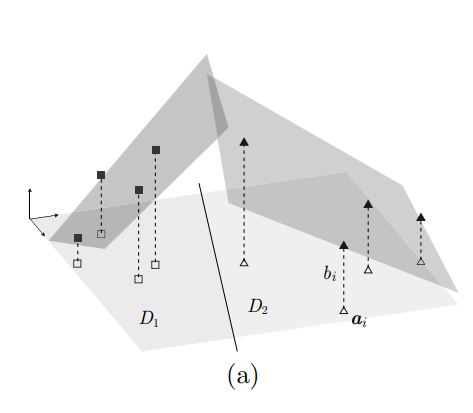
We address the k-Piecewise Affine Model Fitting with Piecewise Linear Separability problem (k-PAMF-PLS) where, given a set of m points with corresponding observations, we have to partition the domain into k piecewise linearly (or affinely) separable subdomains and to determine an affine submodel (i.e., an affine function) for each of them so as to minimize the total linear fitting error w.r.t. the observations.
To solve k-PAMF-PLS to optimality, we propose a Mixed-Integer Linear Programming (MILP) formulation where symmetries are broken by separating shifted column inequalities. For larger-scale instances, we develop a four-step heuristic alternating point reassignment and domain partitioning. Differently from traditional approaches proposed in the literature for similar fitting problems, in both our proposed methods the domain partitioning and submodel fitting aspects are taken into account simultaneously.
-
Long-term scheduling of cogeneration energy systems with a rolling-window optimization algorithm
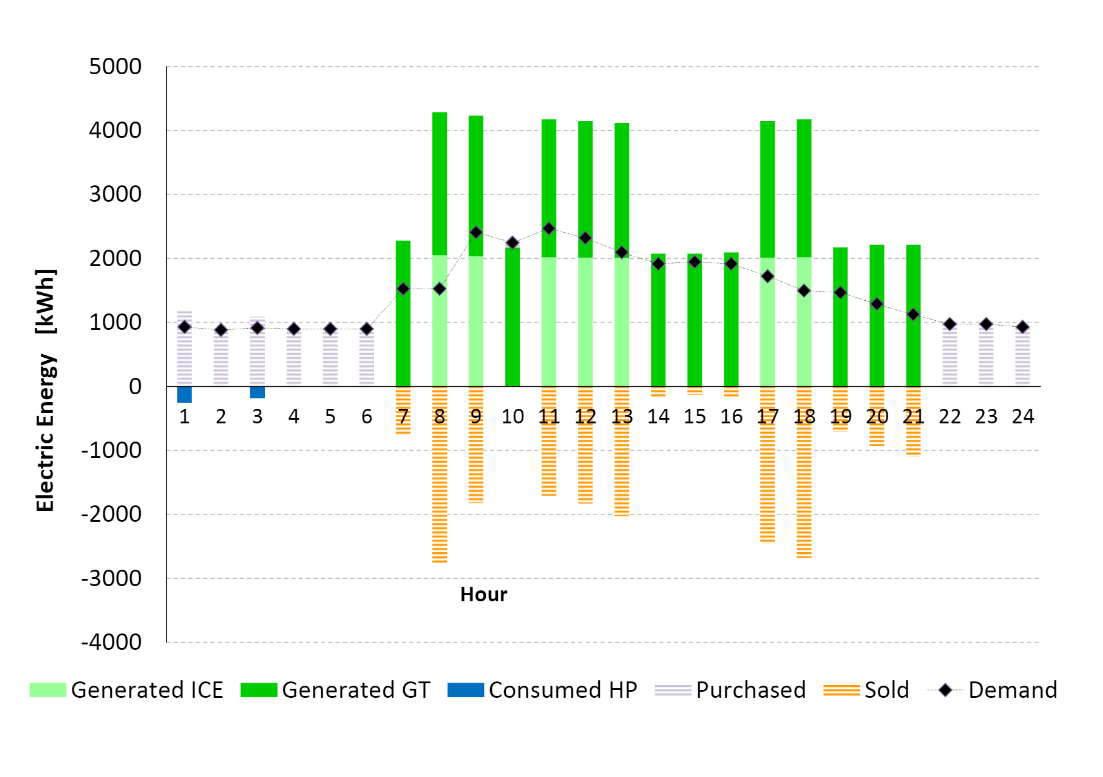
In order to account for European and country-specific fiscal incentive policies for cogeneration systems, it is necessary to consider average yearly-basis energy saving indexes, thus requiring to consider the entire year even when optimizing the operational schedule. This work proposes a rolling-horizon algorithm in which a sequence of weekly MILP submodels is solved, while considering production and consumption estimates based on demand profiles from historical data. The results obtained for a real-world test case are reported and discussed.
-
Optimization of integrated design and operation of microgrids under uncertainty

We propose two Mixed-Integer Linear Programming (MILP) models for a microgrid planning problem which considers uncertainties in the main input data (hourly solar irradiance, wind speed and electricity demand). The first model adopts a Two-Stage Stochastic Integer Programming (2SSIP) formulation with discrete scenarios, whereas the second model adopts a Robust Optimization (RO) formulation with polyhedral uncertainty sets. The aim is to determine the optimal combination, capacities, and number of components to install in the microgrid considering long-term operations and uncertainty in the main input data. The 2SSIP model offers the possibility to obtain a planning solution using discrete scenarios sampled from appropriate probability distributions. The RO model gives a planning solution which is guaranteed to be feasible for any realization of input data within specified uncertainty sets. To show and compare the effectiveness of these models, we present a case study in which we apply the two models to plan a standalone microgrid in Singida, Tanzania.
-
Mixed-Integer Non-Linear Optimization approaches for short-term planning of cogeneration systems

In this work we expllore different optimization approaches to tackle the short-term operational planning of cogeneration energy systems. We propose and test a mixed-integer nonlinear programming formulation for the problem and a mixed-integer linear one, obtained using piecewise-linear approximations of the nonlinear performance functions. We report and discuss numerical results on a set of realistic test cases, comparing the quality of the solutions and the computing time of the two approaches.
-
Optimization of cogeneration energy systems with Mixed-Integer Linear Programming
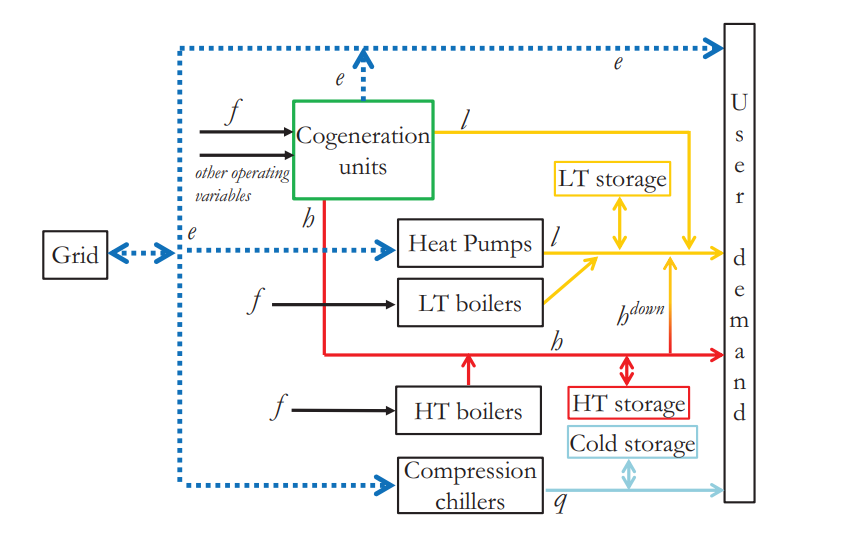
We introduce a complete and detailed optimization model for planning the short-term operation of combined cooling, heat and power (CCHP) energy systems (also known as cogeneration). Given the design of a cogeneration system, we want to determine an operating schedule that minimizes the total operating and maintenance costs minus the revenue due to the electricity sold to the grid, while taking into account time-varying loads, tariffs and ambient conditions.
